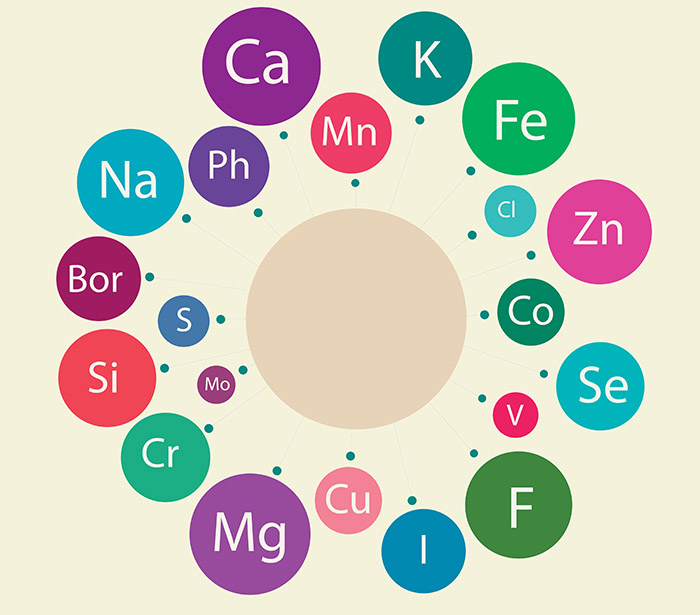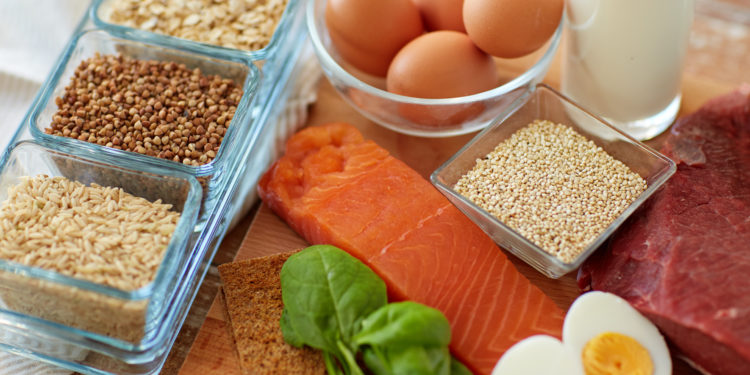Von Itan Store, MA, MS, Kur-Apotheke-Badherrenalb-CPT, CES, PES
Proteins are both a source of interest and controversy amongst athletes and individuals seeking to improve performance and overall health. Although there is much to discuss with respect to protein and health (e.g., gluten, soy, etc.), our goal is to address proteins needs for the active individual. For these individuals, perhaps the most frequently asked question is whether they require additional protein in their diets? While the research is somewhat inconclusive, support does exist for additional protein for endurance and resistance-trained individuals considering how more protein feeds into the energy pathways (approximately 5 – 10 % of total kcal versus 1 – 5 % for the average adult), and how much more proteins are needed to synthesize muscle tissue.
While the current USDA Dietary Guidelines recommend 0.8 g per kilogram of body weight (0.364 g per pound), average protein intakes for American males and females are estimated at 1.15 kg and 0.94 grams per kilogram of body weight respectively (44% and 18% more than the recommended guidelines). For inactive individuals, this poses some health concerns with the liver and kidneys, with dehydration, and with potential calcium losses from the bones. In 2009, however, a joint position stant by the American Dietetic Association (now known as Academy of Nutrition and Dietetics), Joint Dietitians of Canada and American College of Sports Medicine made the following recommendations for active individuals:
- Ausdauerereignisse (Training oder 10 Stunden oder mehr intensiveres wöchentliches Training): 1,2 - 1,4 g pro Kilogramm Körpergewicht
- Krafttraining (Training für Muskelhypertrophie oder Kraft): 1,4 - 1,8 Gramm pro Kilogramm Körpergewicht.
In der Stellungnahme der National Strength and Conditioning Association werden 1,5 bis 2,0 g pro Kilogramm Körpergewicht empfohlen.
Protein synthesis rates generally increase by 100 % over resting rates during the post-exercise period (recovery), enhancing our opportunities to build muscle. Research demonstrates that consuming proteins within 30 - 45 minutes after exercise can increase protein synthesis rates by 150 % over resting rates, but feeding quality proteins (6 grams of essential amino acids – EAA, 35 grams of carbohydrates) within 60 minutes prior to exercise further increased protein synthesis rates. Six grams of EAA is equivalent to approximately 15 – 18 grams of a quality whey protein isolate, and while perhaps not as effective as amino acids, whey powders are more accessible and convenient. Furthermore, although the inclusion of carbohydrates with protein may facilitate amino acid uptake in cells (enhanced insulin function), their consumption close to exercise and consequent insulin response may compromise performance (lowering blood sugar and inhibiting fat mobilization temporarily).
Do alternative whole foods exist that provide this same amount of amino acids? Consuming two hard-boiled eggs, one small chicken breast, three cups of cooked white rice, or six slices of wheat bread can all provide approximately six grams of amino acids, but one must consider the feasibility of ingesting this amount of food inside of 60 minutes of exercise.
Read the ingredient label on some protein powders and you might get easily confused by the various types of proteins listed. Although egg and other protein powders are available (e.g., soy), milk-based powders are the most popular. Milk protein consists primarily of casein and whey with casein accounting for approximately 70 – 80% of cow’s milk protein while whey accounts for approximately 20 %. When milk coagulates (curdles), the translucent-white liquid created is rich in whey, while the curd is rich in casein. Whey protein contains high amounts of branched chain amino acids (BCAAS) that are important to protein synthesis (especially leucine). When dried, this white liquid forms whey powder, which is often used as a food additive. However, further removal of fats, milk sugars, minerals and ash, spurred the growth of protein supplements to what we now call whey concentrates (cheapest), whey isolates and whey isolate hydrolysates (most expensive).
| Molkepulver | Molkekonzentrat | Molke isolieren | |
| 11 - 14,5% |
> 90 % |
||
| < 1.0 % |
|||
| Milchfett % |
1,0 - 1,5% |
2,0 - 10% |
< 1.0 % |
Casein forms a gel (clot) in the stomach thus slows gastric emptying and amino acid uptake into the body to build tissue. Whey on the other hand empties rapidly from the stomach and is quickly assimilated into the body. Given this information, whey is therefore a better source before and immediately following exercise. Casein on the other hand provides a sustained, slow release of amino acids into the blood, somes lasting for several hours. This may be the better choice several hours following exercise (to continue muscle synthesis) or perhaps at night before bed (in smaller quantities) to reduce potential negative nitrogen balances that often occur during an overnight fast.






.jpg?width=330&name=Optima%20Ads_blog3%20(1).jpg)








